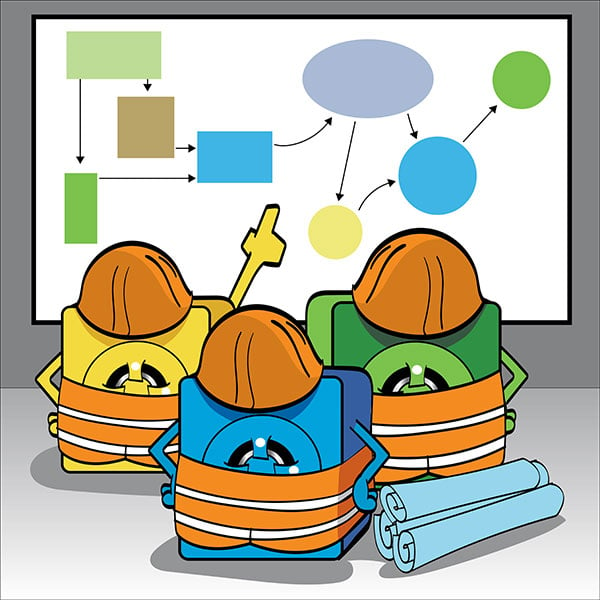Lesson Modules
Teaching Tips:
This lesson was created to work with three different options. The concepts taught are the same for all three options, it just depends on the amount of technology you have available. As you read the lesson make sure you are looking at the content based on the option you will be taking.
Option 1: Teacher has a computer and a class set of Cubelets.
Option 2: Teacher has a computer and students have computers (either individual or in small groups).
Option 3: Teacher has a computer, students have computers (either individual or in small groups), and a class set of Cubelets.
Additionally, as a teacher, you know your students’ well, so feel free to adjust the lesson to better fit your classroom, environment, goals, students, etc.
Option 1: Teacher has a computer and a class set of Cubelets. |
Technology:
Materials:
Preparation:
|
Option 2: Teacher has a computer and students have computers (either individual or in small groups). |
Technology:
Materials:
Preparation:
|
Option 3: Teacher has a computer, students have computers (either individual or in small groups), and a class set of Cubelets. |
Technology:
Materials:
Preparation:
|
Teaching Tips:
What do you already know questions:
- What do you do during a fire drill at school?
- Does your family have a fire evacuation plan? If so what is it?
- Why is it important to have a fire evacuation plan?
Option #1
(Just the teacher has a computer)
- Have students do a think, pair, share.
Options #2 
(The teacher has a computer and students have computers (either individual or in small groups))
- Have the students respond to the reflection questions on their computers.
- Show the results.
- Have a discussion about their responses.
Teaching Tips:
Below you will find 2 examples of robots that students could make. Remember there are ideas that your students may have that are different than the examples below - that does not make them wrong. Encourage them to be innovative and continually test and revise their robots.


Students with computers: Students will be completing their brainstorm on the computer. Make sure to show the Class View so they know how to use the brainstorming activity and how to access it.
Students with no computers: Students will be completing the brainstorming activity on the pdf you printed (attached to this lesson, titled "Fire Safety Student Handouts").
Activity 1
Activity 2
Draw and label which Cubelets you will use to build your safety robot.
Teaching Tips:
At this point, take some student volunteers (or groups)*- and ask them to explain how their robot works and their reasoning behind what their choices. If time permits, discuss the benefits of using certain features for certain functions.
*The number of students or groups to present will depend on time constraints of the session.
You worked on your robot.
Now it’s time to share what you know!
Teaching Tips:
At the end of the lesson students will be reflecting on their learning. Here are some options for their reflections.
Reflection Questions:
- What can you do to stay safe during a fire?
- Did your robot work the way you thought it would? Why or why not?
- How could you improve your creation?
- What was the most challenging part of creating your robot today? Why was that challenging?
Video
- Since the students will not be taking their robots home, if they have cell phones they can record their robots in action. Encourage them to narrate what it happening and why (ex: When it gets hot the .....)
- If the students are recording their projects, they can verbally record their responses to the questions as opposed to typing them.
- Have a whole class reflection discussion.
Computer
- Have the students respond to the reflection questions on their computers.
- Show the results.
- Have a discussion about their responses.
Verbal
- Have students do a think, pair, share: think in their heads, talk with a partner/small group, whole class discussion.
You learned a lot today!
Today was the first step in making a real application with robots. You learned how to use the different features of the Cubelets in order to assist in safety during a fire. You also review all the safety tips in case of a fire, and how technology can help us to improve situations of emergency.
Now you have a prototype of a possible dispositive to assist in case of fires.
Don’t worry, this isn’t for a grade, it’s just so your teacher can check the classes’ understanding.

